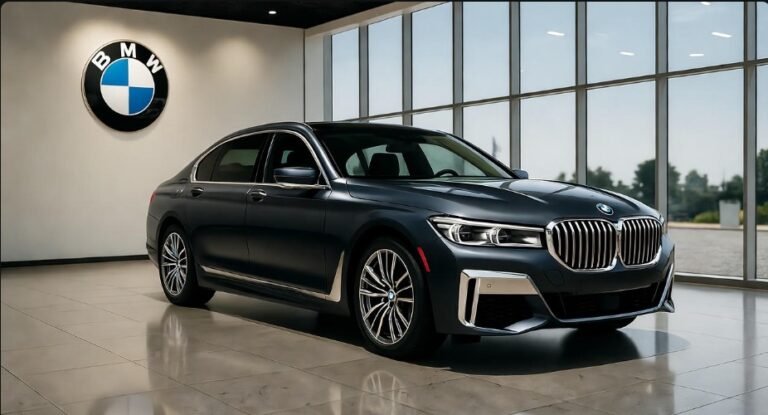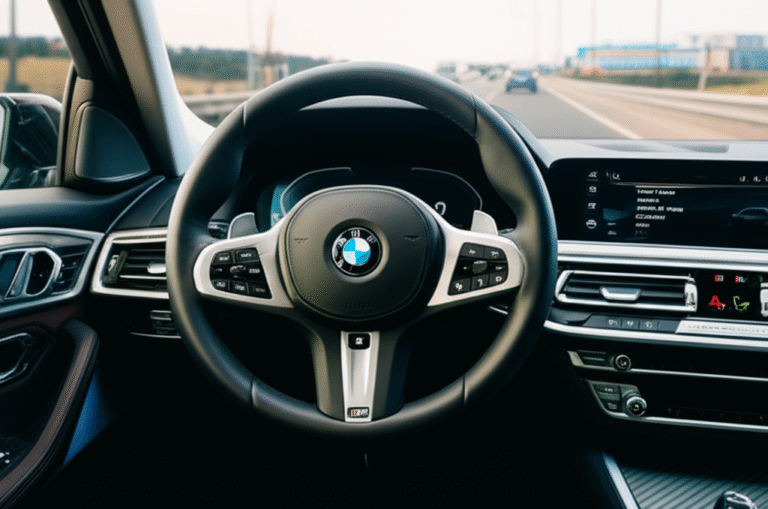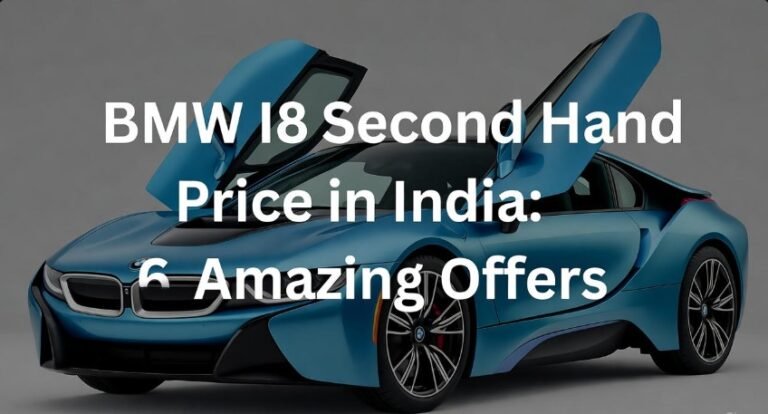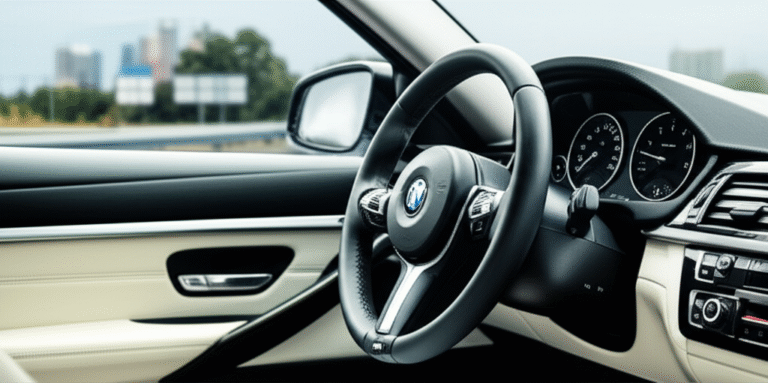90’s BMW Old Models: 7 Stunning Facts
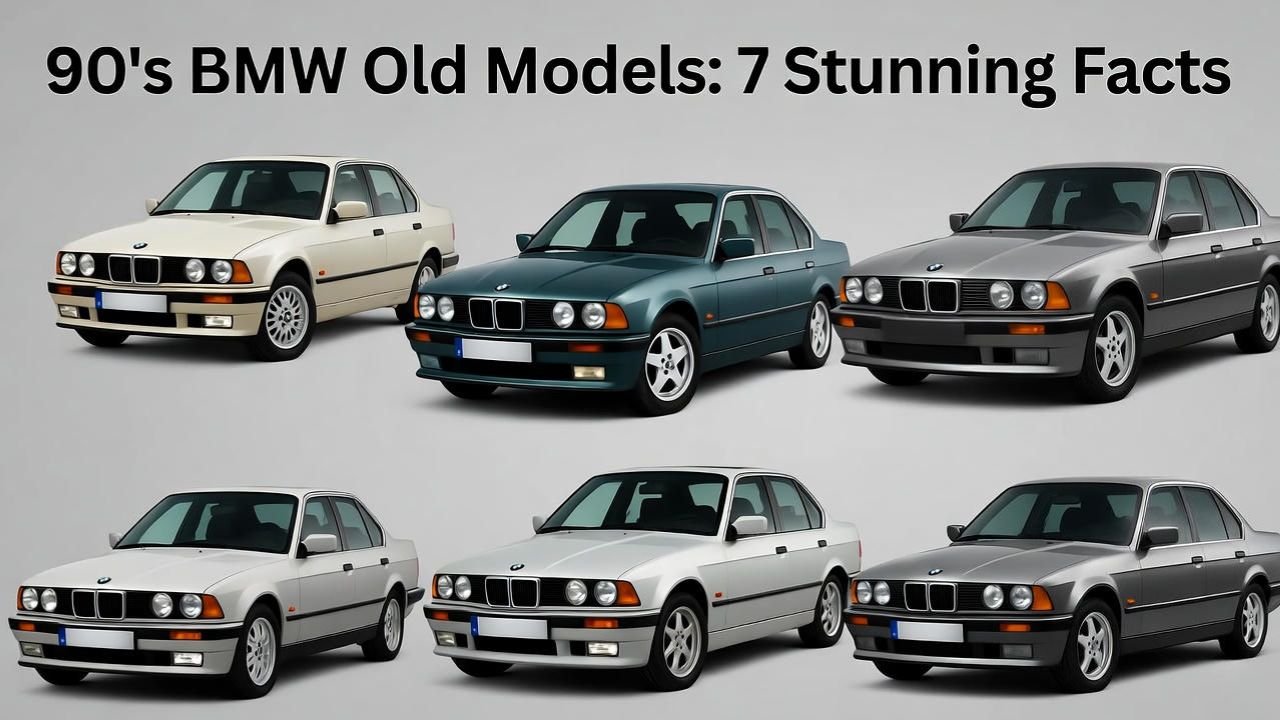
Discover the enduring appeal of 90’s BMW old models with 7 stunning facts. Learn why these iconic cars, from the E30 to the E39, remain desirable classics in the USA, blending performance and timeless design.
Key Takeaways
- Explore iconic 90’s BMW models like the E30, E36, and E39.
- Understand their lasting value and performance engineering.
- Learn about key design elements that define 90’s BMWs.
- Discover historical significance and modern appeal in USA.
- Get tips on maintaining these classic German machines.
The 90’s were a golden era for automotive design and engineering, and BMW was at the forefront of this revolution. If you’ve ever admired a sleek BMW from this decade cruising down a US highway, you’re not alone. These cars represent a perfect blend of performance, luxury, and timeless style that continues to captivate enthusiasts. Understanding what makes these 90’s BMW old models so special can be a fascinating journey. This article will guide you through seven stunning facts that highlight their enduring legacy right here in the USA. Get ready to dive into the world of these automotive legends and discover why they are still highly sought after today.
The Unforgettable 90’s BMW Old Models: A Legacy Defined
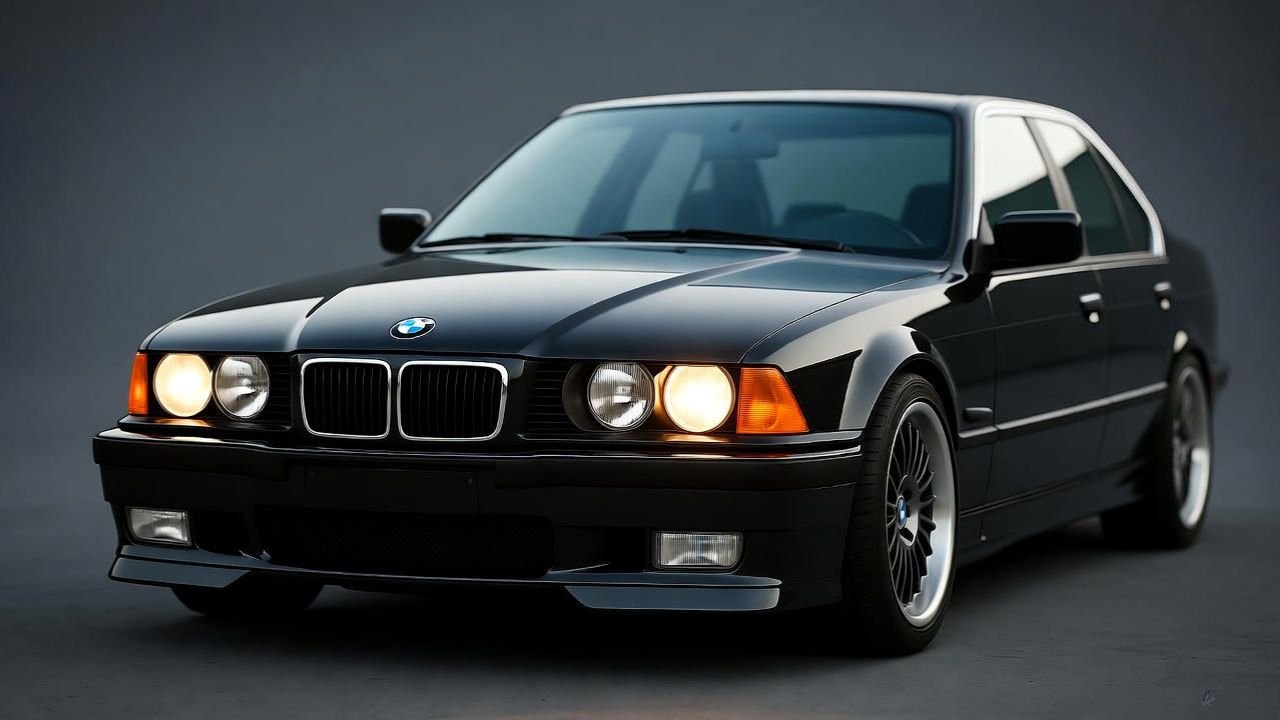
The 1990s were a pivotal decade for BMW, marked by innovative designs and engineering prowess that cemented its reputation for “The Ultimate Driving Machine.” From sporty sedans to elegant coupes, the models produced during this era have a distinct character that resonates with car lovers across the United States. These vehicles weren’t just transportation; they were statements of performance and sophistication, built with a level of craftsmanship that is increasingly rare. If you’re curious about what makes these older BMWs so iconic, let’s delve into the facts that define their legendary status.
1. The E30’s Enduring Charm: More Than Just a Sedan
The BMW E30, produced from 1982 to 1994, truly bridged the gap into the 90’s and remains one of the most beloved BMW models. While its production started in the 80s, its peak popularity and evolution extended well into the 90s, especially the later models. It’s celebrated for its simple, robust engineering and exceptional driving dynamics. The E30 came in various forms: the practical 3 Series sedan and touring (wagon), the sporty 2-door coupe, and the iconic M3 variant.
The E30 M3: A Motorsport Icon
The E30 M3, in particular, is a legend. It was designed with motorsport in mind, featuring a wider body, flared wheel arches, and a more powerful engine. Its success in racing series like the DTM (Deutsche Tourenwagen Masters) cemented its status as a performance benchmark. Today, well-maintained E30 M3s are highly collectible and can fetch significant prices, a testament to their historical importance and driving pleasure. Even standard E30 models are appreciated for their analog driving feel, a stark contrast to modern cars.
E30 Variants and Their Appeal
Beyond the M3, the E30 provided a fantastic entry into BMW ownership. The 325i, with its smooth inline-six engine, offered a compelling blend of performance and refinement. Its rear-wheel-drive platform provided a pure, engaging driving experience that many enthusiasts seek out. The compact size and balanced handling made it a joy to drive on winding roads, a characteristic that BMW has always been known for. Many owners in the USA cherish their E30s for their reliability and the straightforward maintenance that allows for continued enjoyment.
2. The E36 Generation: A Leap in Design and Technology
Following the E30, the BMW E36 (produced from 1990 to 1999) represented a significant evolution for the 3 Series. It introduced a sleeker, more aerodynamic design with a lower drag coefficient, reflecting the changing automotive aesthetics of the 1990s. The E36 offered improved comfort, safety, and driving refinement compared to its predecessor, making it a more practical choice for daily driving while retaining BMW’s signature performance.
Innovations Under the Hood and in the Cabin
The E36 introduced more advanced technologies, including the VANOS (Variable Valve Timing) system in many of its engines, which improved both power delivery and fuel efficiency. Inside, the cabin saw a redesign focused on ergonomics and driver comfort, with higher quality materials and more features available. Models like the 328i and the M3 (E36) were particularly renowned for their potent inline-six engines and impressive performance figures.
The E36 M3: A Performance Powerhouse
The E36 M3 is often considered one of the best M cars ever made. It offered a thrilling driving experience with its potent 3.0-liter and later 3.2-liter inline-six engines, capable of impressive acceleration and top speeds. Its balanced chassis, refined suspension, and responsive steering made it a formidable machine on both road and track. The E36 M3’s success in various racing series and its relative affordability compared to its E30 predecessor made it a popular choice for performance enthusiasts in the USA.
3. The E39 5 Series: Redefining Luxury and Performance
The BMW E39 (produced from 1995 to 2003) took the executive sedan segment to new heights. It represented a significant step forward in terms of refinement, technology, and driving dynamics for BMW’s mid-size offering. The E39 5 Series is often praised for its near-perfect weight distribution, sophisticated suspension system, and exceptionally smooth ride, all while offering a commanding performance.
Engineering Excellence and Refined Powertrains
Engine options for the E39 were diverse, ranging from capable four-cylinder units to powerful V8s. However, the inline-six engines, particularly in models like the 528i and 530i, were epitomes of BMW’s engineering. The E39 also saw the introduction of advanced features for its time, such as integrated navigation systems, xenon headlights, and more sophisticated electronic stability controls. The E39 M5, with its naturally aspirated 4.9-liter S62 V8 engine, remains a legend for its raw power and incredible sound.
A Benchmark in its Class
The E39 5 Series set a new standard for luxury sedans. Its blend of executive comfort and sporty handling made it a favorite among drivers who appreciated both performance and refinement. The build quality of the E39 is exceptional, meaning many examples are still on the road today after decades of use. Its sophisticated yet robust design still holds up, making it a desirable classic for those seeking a premium German sedan experience without the premium new car price tag.
4. The Z3 Roadster and Coupe: Quirky Charm and Driving Fun
The BMW Z3, launched in 1995, brought BMW back into the small roadster market with a distinctive style and engaging driving experience. Its retro-inspired design, reminiscent of classic British roadsters, combined with BMW’s engineering, created a unique proposition. The Z3 was famously featured in the James Bond film GoldenEye, instantly boosting its profile and desirability worldwide, including in the USA.
The Z3’s Distinctive Design Elements
The Z3’s styling, with its sculpted fenders and elongated hood, gave it a classic roadster look, while the interior provided a modern, driver-focused cockpit. It offered a playful and agile driving experience, especially in its more powerful variants like the Z3 M Roadster and Coupe. These models, with their flared arches and aggressive stance, offered performance that could rival many sports cars of the era.
The Z3 M Coupe: A Future Classic
The Z3 M Coupe, often nicknamed the “clown shoe” due to its unique shooting-brake-like profile, has become a cult classic. Its distinctive styling and potent inline-six engines made it a rare and exhilarating machine. While initially polarizing, its rarity and performance have led to a significant appreciation in value. The Z3 Roadster, on the other hand, offered a more accessible way to enjoy open-top BMW motoring, with many examples remaining popular for weekend drives and scenic tours.
5. Timeless Design Language: The BMW Aesthetic
BMW’s design language in the 1990s struck a perfect balance between sportiness and elegance. The signature kidney grille, Hofmeister kink in the rear window, and the purposeful stance were all present, evolving with each new model. Designers like Chris Bangle and his team began to influence BMW’s aesthetic during this period, setting the stage for future generations.
Aerodynamics Meet Aggression
The 90’s saw BMW models become more aerodynamic, with smoother lines and flush-mounted components. Yet, they retained an aggressive, athletic presence that signaled their performance capabilities. Whether it was the subtle lines of a 3 Series sedan or the more muscular curves of an M car, there was an undeniable visual appeal that set BMWs apart. This design philosophy created cars that looked good then and continue to look modern today, a hallmark of enduring automotive artistry.
Interior Craftsmanship
Inside, BMWs of the 90s were known for their driver-centric cockpits. The dashboard was typically angled towards the driver, with all controls easily accessible. Materials were generally of high quality, and the build quality was excellent, contributing to the feeling of luxury and solidity. This focus on the driver experience ensured that the aesthetic appeal extended beyond the exterior, creating a cohesive and desirable package.
6. Performance Engineering: The Heart of the 90’s BMW
BMW’s commitment to performance was a defining characteristic throughout the 1990s. The brand is famous for its inline-six engines, which were renowned for their smooth power delivery, impressive torque, and distinctive sound. These engines were the heart of many iconic 90’s models, providing a thrilling driving experience that few competitors could match.
Inline-Six Excellence
The M50, M52, and S50/S52 engines found in models like the E36 3 Series and E39 5 Series exemplify BMW’s mastery of the inline-six configuration. These engines offered a fantastic blend of performance and refinement, making them ideal for both spirited driving and comfortable cruising. Their robust construction and excellent engineering meant that many of these engines have proven to be very durable, contributing to the longevity of these classic cars.
Rear-Wheel Drive Dynamics
BMW’s consistent use of rear-wheel drive (RWD) in its popular models like the 3 Series and 5 Series was crucial to their driving appeal. RWD provides a balanced weight distribution and allows for more precise handling and steering feel, which are essential for an engaging driving experience. This setup is a core part of what makes older BMWs so rewarding to drive, especially on twisty roads or during spirited driving sessions in the USA. A look at the BMW Group’s history reveals a consistent dedication to this principle.
7. Modern Collectibility and Value in the USA
Today, 90’s BMW old models are experiencing a resurgence in popularity among car enthusiasts and collectors. Their blend of classic styling, engaging performance, and relative affordability compared to other European luxury cars from the same era makes them attractive. Well-maintained examples, especially performance-oriented models like the M3 variants, are appreciating in value.
The Enthusiast Market
The enthusiast community for these cars is strong and active across the USA. Online forums, social media groups, and local car clubs provide platforms for owners to share knowledge, find parts, and connect with like-minded individuals. This community support is invaluable for maintaining and preserving these classic vehicles. The availability of aftermarket parts and the knowledge base within the community make ownership more manageable than one might expect.
Why They Remain Desirable
These BMWs offer a tactile, analog driving experience that is increasingly sought after in today’s market of high-tech, often disconnected modern vehicles. They represent a simpler, more engaging era of automotive engineering. For many, owning a 90’s BMW is about recapturing a piece of automotive history and enjoying a car that still delivers an exceptional driving experience. The combination of performance, luxury, and a touch of nostalgia ensures their place in the automotive landscape for years to come.
Pro Tips: Keeping Your 90’s BMW Running Smoothly
Ensure you find a reputable mechanic specializing in European cars, particularly BMWs. Regular maintenance, including oil changes, coolant flushes, and timely replacement of wear items like belts and hoses, is crucial. For older models, be proactive with rust prevention and check electrical systems, as these can be common points of concern. Don’t underestimate the value of a service manual for DIY maintenance.
A Glance at Key 90’s BMW Models and Their Legacy
| Model Series | Production Years (approx.) | Key Characteristics | Legacy |
|---|---|---|---|
| E30 3 Series | 1982-1994 (extended into 90s) | Simple, robust, excellent handling, iconic M3 | Motorsport legend, enduring driver’s car |
| E36 3 Series | 1990-1999 | Sleek design, improved comfort, advanced tech, capable M3 | Pinnacle of 3 Series evolution, performance benchmark |
| E34 5 Series | 1987-1996 (extended into 90s) | Executive luxury, smooth ride, powerful engines, M5 | Defined luxury sport sedan, V8 options |
| E39 5 Series | 1995-2003 | Refined luxury, superior handling, advanced features, legendary M5 | Benchmark for executive sedans, excellent build |
| Z3 Roadster/Coupe | 1995-2002 | Sporty roadster, unique styling, engaging drive, M variants | Return to roadster segment, cult classic “clown shoe” |
| 8 Series (E31) | 1989-1999 | Grand tourer, V8/V12 engines, pop-up headlights, timeless design | Flagship luxury coupe, engineering marvel |
Frequently Asked Questions (FAQs)
What makes 90’s BMW old models so special?
These models are special due to their engaging driving dynamics, robust engineering, iconic inline-six engines, timeless design, and a perfect blend of performance and luxury. They offer a more analog driving experience compared to modern cars.
Are 90’s BMWs reliable for daily driving in the USA?
Many 90’s BMWs can be reliable daily drivers if well-maintained. Key components like engines and transmissions are robust. However, expect to perform more regular maintenance than with a new car, and factor in potential costs for original or specialized parts. It’s crucial to buy a well-cared-for example.
Which 90’s BMW model is the best to buy for a beginner enthusiast?
For beginners, the E36 3 Series (such as a 325i or 328i) is often recommended. They offer a good balance of performance, modern features, and are more affordable and easier to find parts for than some other models. They also provide a great introduction to rear-wheel-drive BMW dynamics.
What are the common maintenance issues for 90’s BMWs?
Common issues can include cooling system leaks (water pumps, radiator hoses), oil leaks (valve cover gaskets, oil pan gaskets), worn suspension components (bushings, shocks), and electrical gremlins. Rust can also be a concern, especially in certain climates. Regular inspections and preventative maintenance are key.
How do I find parts for a 90’s BMW old model?
Parts availability is generally good. You can find new and used parts through BMW dealerships (though some parts might be discontinued), specialized BMW parts retailers (online and brick-and-mortar), forums dedicated to specific models, and general automotive parts suppliers. The strong enthusiast community is a great resource.
Are 90’s M3 models a good investment?
Yes, 90’s BMW M3 models (like the E30 M3 and E36 M3) are generally considered good investments. Their values have been steadily increasing, especially for well-maintained or low-mileage examples. Their motorsport heritage and exceptional performance make them highly desirable collector cars.
What should I look for when buying a used 90’s BMW?
When buying, thoroughly inspect the vehicle’s maintenance history, look for signs of rust (especially around wheel arches, rocker panels, and subframe mounting points), check the condition of the cooling system and suspension, and listen for any unusual engine noises. A pre-purchase inspection by a BMW specialist is highly recommended.
Conclusion: The Enduring Appeal of a Classic Era
The 1990s were a remarkable time for BMW, producing vehicles that have stood the test of time and continue to be cherished by enthusiasts worldwide, especially here in the United States. From the raw motorsport pedigree of the E30 M3 to the refined luxury of the E39 5 Series, these “old models” represent a golden age of automotive engineering and design. Their blend of performance, style, and driver engagement offers a compelling proposition for anyone looking for a classic car with genuine character and capability. Whether you’re a seasoned collector or a newcomer to the brand, exploring the world of 90’s BMWs reveals a rich history and a driving experience that remains as relevant and exciting today as it was decades ago. These cars aren’t just metal and machinery; they are rolling pieces of automotive art that continue to inspire passion and drive.

